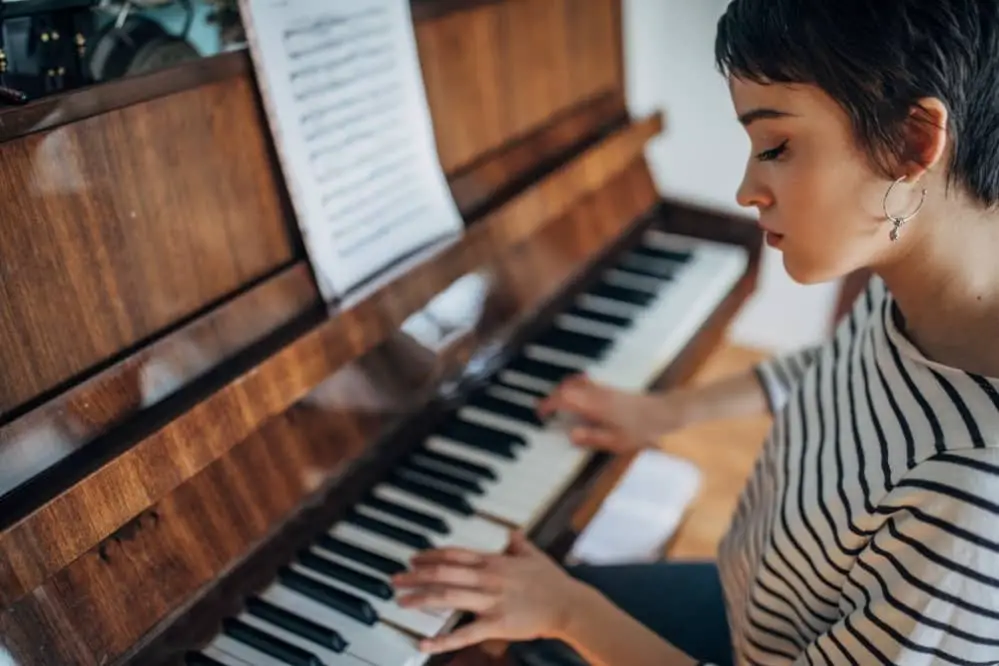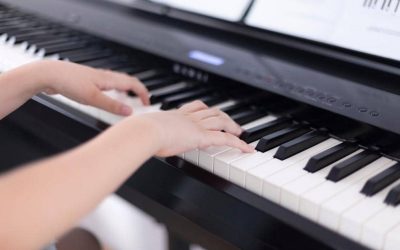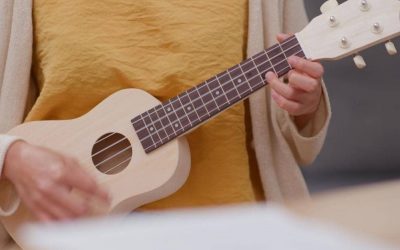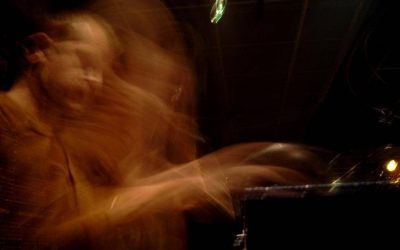Learning how to play piano is one thing, but playing without looking at the keys is something else entirely. Even though this is your goal as a pianist, many newbies find this a rather intimidating task to accomplish. After all, how can you press on the keys of a keyboard without looking down to see what you’re doing? The thing is, you’re supposed to play the piano without looking at the keyboard, and the best way to do that is to learn a few techniques and practice regularly. Let’s go over some of those techniques.
1. Explore the Keyboard
Learn the keyboard by memorizing the keys and feeling each key with your fingers. You’ll notice there are two black keys then three black keys together. If you see the two black keys, the white key before that is a C. When you see the set of three black keys, the white key before that is the F. Once you learn those two notes, you can easily learn the rest of the keys. Your black keys are the sharps and flats, so go ahead and learn some basic notes first so that the others will follow.
2. Find the Middle C Key to Start
To play without looking at the keys, you have to learn the notes, and if you find the middle C key first, explore from there, you’ll soon be ready to play most beginner songs. Most songs for beginners have the middle C note in them, and just so you know, on a typical 88-key piano, the middle C is actually the fourth C when you’re counting from the left. You can even start by closing your eyes and pressing the middle C key so that you can get more comfortable with where it is located.
3. Concentrate on Your Fingering
Fingering – knowing which finger is placed on which key – is important when playing the piano. You can develop muscle memory the more you practice where each finger is supposed to be as you play. In fact, the first step in playing the piano and not looking at the keyboard involves learning and practicing your fingering. In other words, the more you learn how to finger the notes properly, the easier it will become to play the piano while not looking at the keyboard.
4. Practice Your Scales and Arpeggios
Scales and arpeggios help you learn to be a better piano player. Practicing them every day is a good idea because the more you practice these two things, the easier piano-playing will become to you. Even after you’ve memorized all of your scales and arpeggios, you still need to keep practicing them daily. Just like professional players still have to warm up before performing, practicing scales and arpeggios is still an important first step to your daily playing routine.
While scales are what most people think of when they think of practice pieces, and they involve the keys in a natural order, arpeggios skip certain notes and sound like broken chords. The notes are played in either ascending or descending order, and they sound very harmonious, which makes them pleasant to listen to. You often hear arpeggios in compositions, so once you learn them, you’ll be able to recognize them in different songs from then on.
5. Fingering Is Important
Once again, your fingering techniques are important when you’re interested in playing without looking at the keyboard, but it is also good to know that these techniques can vary a little between each player, since every person has fingers and hands of different sizes. Still, the basics can be adopted and practiced as a way to better your playing skills, and below are some of the techniques that are good to keep in mind:
- Considering finger length when fingering. One basic rule of thumb for piano players is that the longer keys should be played by your shorter fingers, while you should use your longer fingers to play the shorter keys. Not only does this feel a lot more natural as you’re playing, but it also enables you to play without straining as much to play the keys.
- Fingerings using an open-hand position. If your hand is open as you play, your fingers can move a lot more freely. If your non-playing fingers barely touch the keys as the other fingers are playing, they will be in a ready position when they are needed to play a note. If you collapse or curl up your hand, certain techniques – for example, the thumb-crossing technique – will be more difficult and cumbersome. The open-hand position also makes certain notes and chords a lot easier, including arpeggios.
- Thumb crossing. For a sound that isn’t disrupted, the thumb-crossing technique keeps you from having to lift your hands to change a certain position. You’ll play certain notes a lot quicker, and it is considered a very important technique for all pianists.
Playing the piano keys without looking at them just takes practice, but again, this should be your goal because playing while concentrating on things other than the piano keys helps you play better and encourages more creativity as you play. Not only is it the way piano players are supposed to play, but it makes piano playing simpler, faster, more creative, and a lot more fun. Indeed, you cannot look at the music you’re playing and be accurate at what you’re doing if you’re looking at the keys all the time.
If this all sounds too complicated, don’t worry because it isn’t. The basic rules involved in learning to play are relatively simple. It just takes time to get really good at it!
Conclusion
While learning to play the piano isn’t that difficult, it takes a little more than the basics to get really good at it. Still, practicing is the only way to get good at the piano because there are no shortcuts to becoming a better musician. Fortunately, practicing is something anyone can do, and if you practice just an hour each day, you’ll be surprised by how quickly you’ll begin to improve. To practice correctly, though, you have to know what and how to practice, but this is much easier than you think.
Scales and arpeggios are a great place to start when you’re a beginner, as is improving your fingering techniques. Once you learn a few basics, you’ll actually start looking forward to your practice sessions because you’ll get better at playing and start to enjoy it at that point. This is when it gets really fun to play the piano and will encourage you to keep on going and improve your skills even more.






